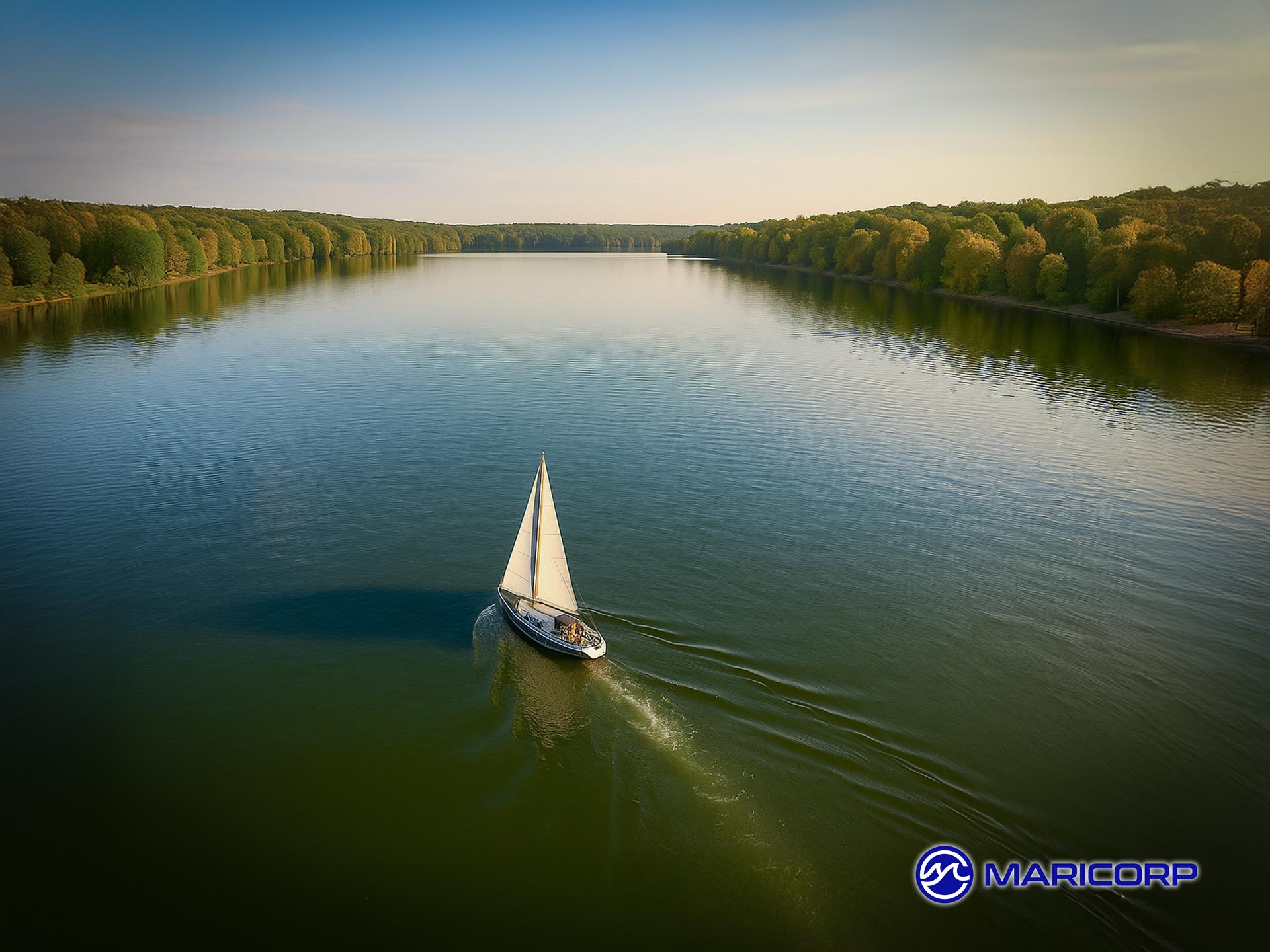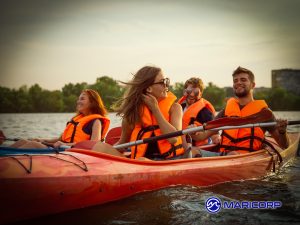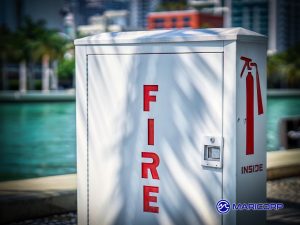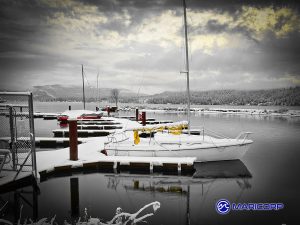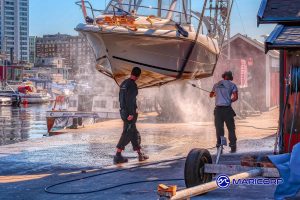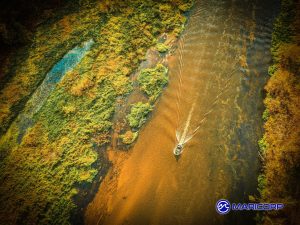10 Family Boating Safety Tips
As school routines return and summer begins to wind down, many families try to squeeze in one last adventure on the water. Whether it’s a Labor Day getaway, a post-practice pontoon cruise, or a Saturday fishing trip, late August remains a popular time for weekend family boating. But with shifting schedules, variable weather, and younger passengers onboard, now is the time to reinforce best practices for family boating safety.
1. Rethink Life Jacket Fit and Sizing
Kids grow quickly—and what fit in May may no longer be safe in August. Always check that life jackets are properly sized for each child before heading out. According to the U.S. Coast Guard’s life jacket requirements, children under 13 must wear an approved life jacket at all times while underway unless they are below deck or inside an enclosed cabin.
Check that:
The jacket is Coast Guard-approved (look for the approval number on the inside label)
It fits snugly with all zippers, buckles, and straps secure
It does not ride up above the ears or chin when pulled at the shoulders
Inflatable life jackets, while convenient for adults, are not suitable for children under 16. Make sure all passengers have access to the right type of flotation for their size, activity, and swimming ability—an essential element of family boating safety.
2. Review Onboard Rules with Younger Passengers
Back-to-school season often means you’ll have more children onboard during shorter, less routine outings. Take time before each trip to set clear expectations—whether you’re heading out for a quick sunset cruise or a half-day tubing run.
Designate seating areas, explain when it’s okay to move around the boat, and show kids where emergency items like life jackets, fire extinguishers, and throw rings are stored. Even basic rules like “stay seated while the boat is moving” and “keep hands inside the rails” go a long way in preventing injuries.
For teens, consider a refresher on the basics of navigation, how to use the VHF radio, or how to assist during docking. Teaching these skills builds confidence and contributes to overall family boating safety, especially on less familiar waters.
3. Monitor Late-Summer Weather Conditions Closely
August brings unpredictable transitions—cooler nights, pop-up storms, and foggy mornings. These shifts can catch even experienced boaters off guard, especially during quick weekend family boating trips where planning may be minimal. Encourage staff and slip holders to rely on trusted marine weather tools like NOAA’s NowCOAST and Windy for up-to-the-minute wind, radar, and water condition updates.
Sudden gusts, temperature drops, and incoming thunderstorms all present unique risks when young passengers are on board. To maintain family boating safety, it’s important to:
Check weather before departure and again before returning to the dock
Have foul weather gear and dry clothes stored onboard
Establish a lightning action plan—know where to seek shelter, and how to get there quickly
Fall-like fronts can also make water feel colder than expected. Emphasize how sudden immersion in cooler water can lead to panic, even in strong swimmers.
4. Revisit Cold Water and After‑Dark Safety
As daylight fades earlier, it’s common to extend trips into dusk—especially during weekend family boating outings. Reduced light complicates navigation and safety, making pre-departure checks critical for family boating safety.
Begin by inspecting your navigation lights: sidelights (red/green), stern light, and all-around or anchor light. Confirm they’re clean, bright, and correctly positioned. Ensure handheld flashlights with charged batteries are accessible, and consider having a spotlight for emergencies.
Trusted boating safety sources highlight the importance of using navigation lights not just for compliance, but for helping other vessels judge your speed, angle, and direction. Reduced speed and heightened awareness are essential in low-visibility conditions. Use sound signals when appropriate, and maintain a vigilant lookout for buoys, vessels, and floating hazards.
To reinforce family boating safety after dark:
Slow down and post an additional lookout
Avoid having children move around while underway
Use layered clothing and blankets to guard against cooling temps after sunset
Conduct a brief emergency drill covering lighting failure or man-overboard scenarios
These precautions preserve safety and confidence for families enjoying after‑dark outings—even as the school season begins and temperature patterns shift.
5. Prepare for Busy Ramps and Fall Crowds
While summer wanes, the end of August and early September can surprise marina operators with a surge in ramp activity. Families chasing one last day on the water, weekend family boating outings, and first-time fall anglers often crowd ramps, raising the risk of trailer mishaps and pedestrian accidents.
Ramps are busy places—especially during weekends. To bolster family boating safety, it helps to assign roles, stay organized, and prioritize ramp etiquette.
Ramp safety practices to reinforce:
Follow a ramp-ready routine before joining the queue: remove tie-downs, insert the drain plug, load gear, and ensure everyone has a life jacket before approaching the water.
Designate a ramp supervisor, either an adult or responsible teen, to manage children and signal the driver during launch or retrieval.
Keep kids seated and at a safe distance from ramp edges, trailers, and moving vehicles.
Maintain calm and patience. Overcrowded ramps are not the place for rushing—courteous spacing and clear communication help prevent incidents.
There’s a reason boat ramp fails have become a category of memes all their own—it’s easy to laugh when it’s not your trailer floating away. But in reality, most of those mishaps start with small oversights that could have been prevented with a checklist and clear communication.
A helpful breakdown on boat ramp etiquette from PierShare offers practical reminders for staging, spacing, and launch coordination—perfect for seasonal boaters or families looking to avoid becoming the next viral video. By treating ramp procedures with the same diligence as on‑water safety, you reinforce family boating safety and help everyone wrap up their outing with dry feet and intact dignity.
6. Double-Check Trailer and Tow Vehicle Readiness
As boating trips become shorter and more spontaneous—often squeezed between school pickups and weekend soccer games—your trailer and tow vehicle move back into the spotlight. Whether it’s a quick haul to the lake or one last overnight trip before Labor Day, taking time to inspect your trailering setup is a smart and often-overlooked step in family boating safety.
It’s easy to assume everything’s fine if the trailer “was working fine last time.” But that last time may have involved potholes, brake wear, or that suspicious rattle nobody had time to investigate. A pre-trip check now can prevent a roadside breakdown, or worse—a social media-worthy boat-launch blunder in a grocery store parking lot.
Key trailer safety checks:
Inspect trailer tires for wear, cracking, or low pressure—don’t forget the spare.
Check wheel bearings for heat or play, and make sure bearing buddies are greased.
Verify that trailer lights and signals are working—especially on multi-lane highway routes.
Confirm winch straps, safety chains, and bow stops are secure and undamaged.
Tow vehicle tips:
Test brakes and transmission performance, especially if towing uphill or in stop-and-go traffic.
Double-check mirrors and hitch height to avoid sway or poor visibility.
Load gear smartly—keep heavier items in the vehicle trunk instead of stacked in the boat.
If your marina offers trailer inspections, mechanical services, or local shop referrals, now is a good time to promote those resources to your boating community.
Adding this layer of diligence not only reinforces family boating safety but also helps families return home with smiles—not tow truck receipts.
7. Reinforce Water Etiquette with Young Boaters
Back-to-school season is also a back-to-basics opportunity—especially when it comes to behavior on the water. Whether kids are on paddleboards, personal watercraft, or just tossing lines off the dock, this is a great time to refresh everyone on proper boating etiquette. While it may not be part of the school curriculum, it’s a big part of family boating safety.
Younger boaters often model what they see—so set the tone early. Emphasize that respect for other boaters, the environment, and marina rules is just as important as wearing a life jacket. If you’re launching a boat, remind kids to stay clear of other trailers and to walk, not run, near the ramp or dock. When anchoring near other families or entering no-wake zones, explain why slower speeds and lower voices matter.
Helpful etiquette reminders for young crew:
Always ask before boarding someone else’s boat or touching their gear
Keep music at a respectful level, especially in coves or quiet anchorages
Don’t block fuel docks or pump-out stations—a classic rookie move
Wave and give way when appropriate—manners are still appreciated on the water
Sure, it might feel like you’re lecturing your kids on dockside diplomacy, but these small moments build lifelong habits that keep them safe, respectful, and welcome in any marina setting.
And if they start correcting you on right-of-way rules? That’s just proof your family boating safety lessons are sinking in—pun fully intended.
8. Keep Safety Gear Stocked and Up to Date
Between snack wrappers, wet towels, and tangled tow ropes, it’s easy for safety gear to get buried—or worse, lost—by the end of a long weekend family boating trip. That makes now the perfect time to take stock of your boat’s emergency supplies and safety gear before fall outings begin.
Safety equipment isn’t just a checklist item—it’s the backbone of every good family boating safety plan. But when equipment gets moved between boats, pulled out and never returned, or expired without notice, your crew could be left unprepared when it matters most.
Essential gear checks:
Inspect and count life jackets for every passenger—especially if your crew includes new friends or growing kids
Replace expired flares and fire extinguishers (check the inspection tags or pressure gauges)
Test your horn, whistle, and VHF radio for volume, battery strength, and range
Ensure throwable devices (like life rings or cushions) are easily accessible and not waterlogged
Replenish first aid kits, including motion sickness meds, adhesive bandages, and antiseptics
Bonus tip: toss a few glow sticks in your kit—they’re kid-friendly, fun after dark, and handy for marking lines or visibility in low light.
Also check dry bags, flashlights, and emergency blankets to ensure nothing’s grown moldy, cracked, or corroded. If your marina offers safety gear demos or check-in days, late August is a great time to promote them.
Having well-stocked, working safety gear gives peace of mind—and ensures that your family boating safety routine is as reliable as your weekend plans.
9. Talk Through Fall-Specific Hazards
Back-to-school doesn’t mean back to the slip just yet. Many families continue to hit the water on weekends, especially as cooler temps and thinner crowds make boating feel more relaxed. But that also brings unique fall-specific hazards that can catch even seasoned boaters off guard—especially those focused more on packing snacks than checking tide forecasts.
For consistent family boating safety, it’s worth reviewing the subtle seasonal shifts that come with the September boating scene.
Watch out for:
Cold water shock – Even when the air feels warm, lakes and rivers cool quickly. Unexpected immersion in 60–70°F water can impair muscle control and breathing in minutes—particularly in kids.
Shifting daylight – Sunset creeps up faster in September. A cruise that started in daylight may end with unlit markers and dark docks.
Fewer boaters nearby – While it’s great to have the water to yourself, it also means fewer potential rescuers in an emergency. Make sure your VHF radio is charged and your float plan is shared.
Floating debris after rain – Summer storms and falling leaves can clog waterways and hide submerged hazards—especially near wooded shorelines.
And let’s not forget the autumn wildlife shift. Yes, that’s a flock of migrating geese on the bow rail. No, they do not take orders from the captain.
Taking a few extra minutes to talk through these conditions before departure can make your weekend family boatingouting safer, calmer, and more enjoyable for everyone onboard.
10. Reflect on Lessons Learned This Season
As boat traffic slows and the school-year rhythm takes hold, now is the ideal time for families to reflect on their boating experiences from the summer. After all, hindsight may be 20/20—but foresight can save you from becoming next season’s ramp-fail meme.
Taking a few minutes to reflect can significantly improve family boating safety in future outings. Each trip provides lessons, whether about equipment, routines, or how everyone works together onboard. Sharing these insights as a family can reinforce good habits and highlight areas needing improvement.
Which safety items did we consistently overlook or forget?
Did the kids clearly understand their roles and responsibilities?
Were there any near-misses that could’ve been prevented?
What gear would have made our outings smoother or safer?
What skills or training would enhance our next boating season?
Encourage families to note these answers—or even share them with marina staff. Feedback from real experiences helps marinas tailor workshops, create targeted resources, or offer equipment checklists specifically designed for families.
After all, family boating safety is about more than life jackets and flares—it’s about constantly learning from your experiences, good and bad. A little end-of-season reflection can turn last summer’s close calls into next summer’s smooth sailing.
Related Articles:
About MariCorp
Maricorp is one of the largest floating boat dock manufacturing and construction companies in the United States, specializing in galvanized steel floating docks and boat lift systems. With projects spanning coast-to-coast, Maricorp provides marina consultation and design, marine construction, marina repair and renovation, and boat dock disaster response and demolition.


